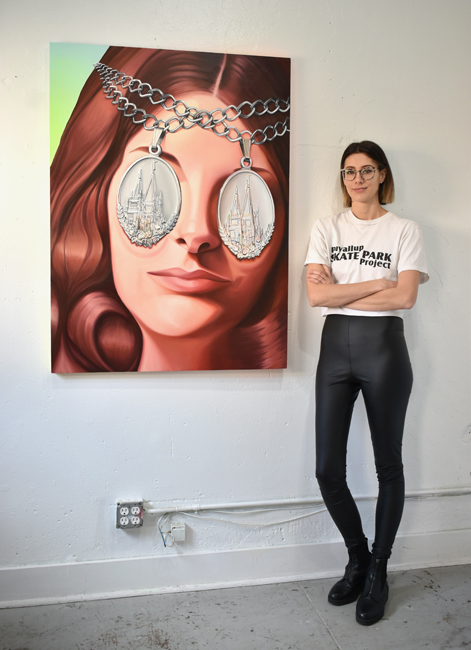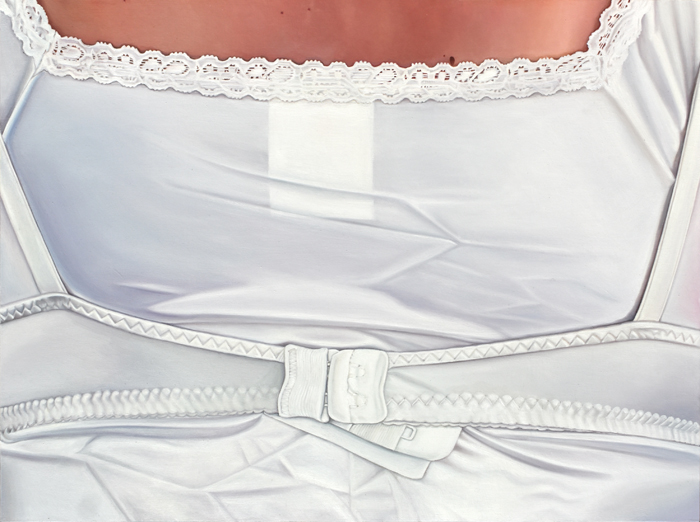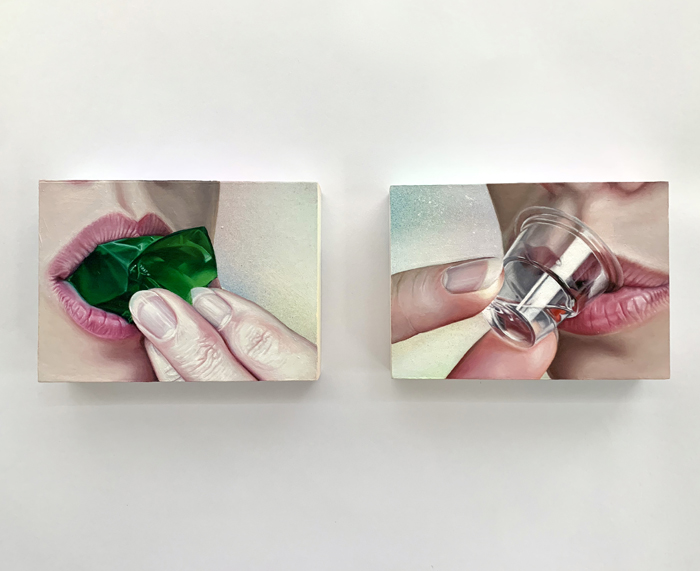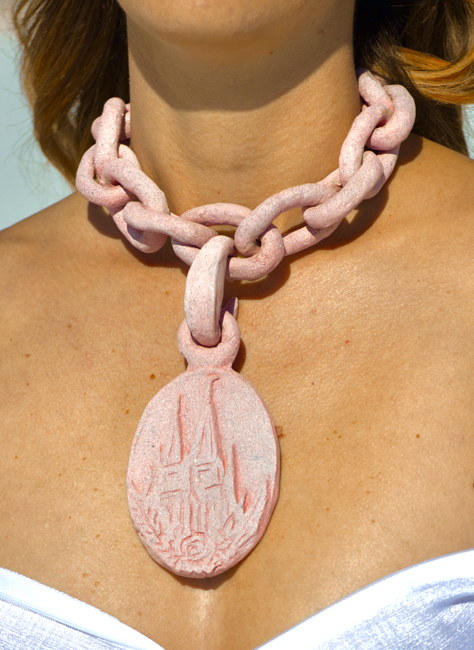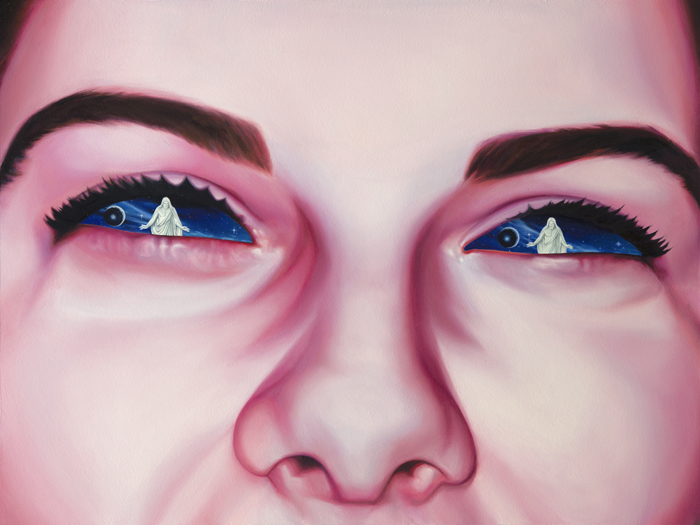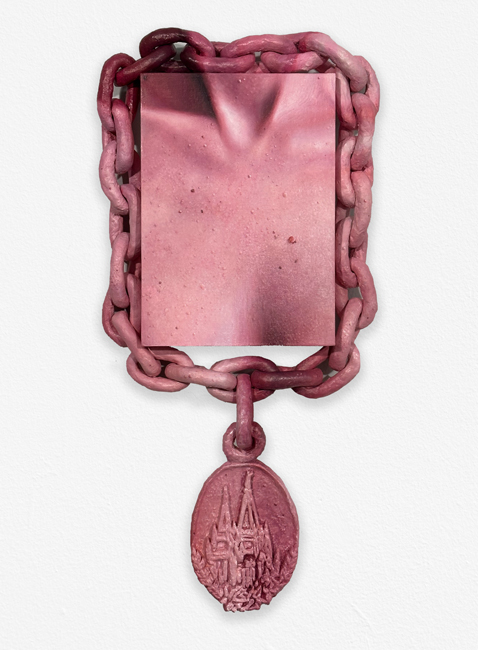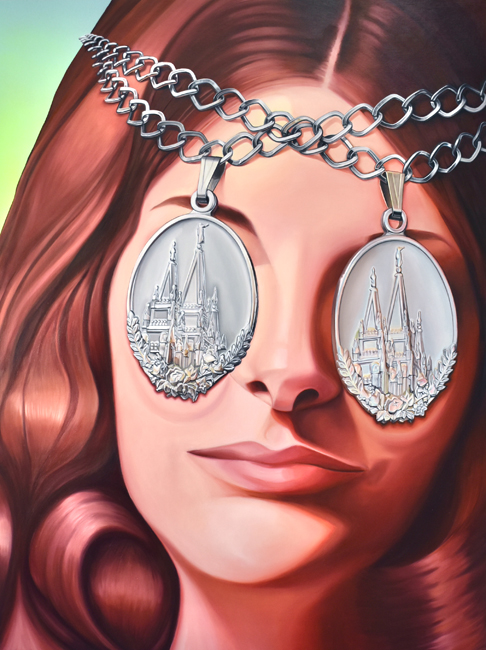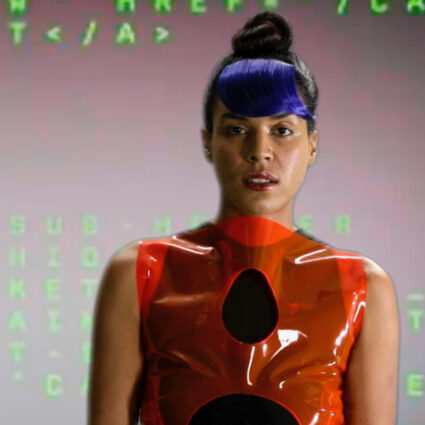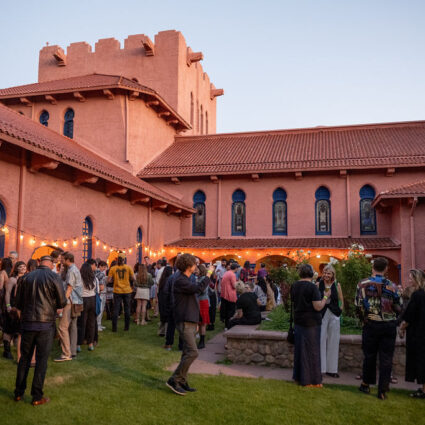Hayley Labrum Morrison’s eerily provocative work invites viewers to contemplate the formation of identity, gender, and body politics within über-religious patriarchal systems.
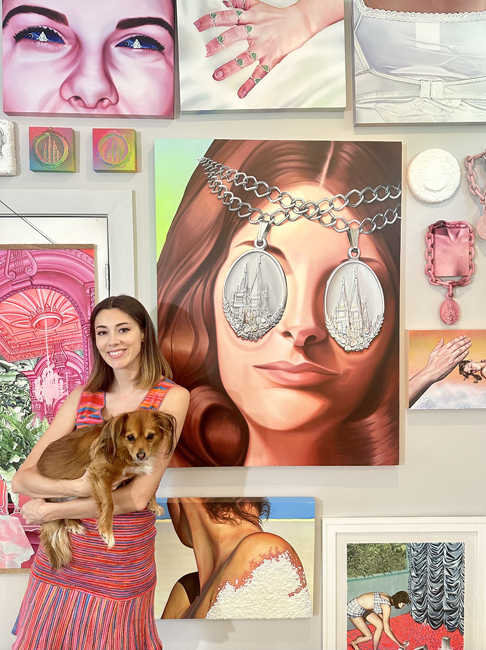
Hayley Labrum Morrison grew up in Utah as a devout member of the Church of Jesus Christ of Latter-day Saints. After graduating with her BFA in studio art from Brigham Young University in 2008, she left Utah for Chicago and then Australia before landing in Austin, Texas, where she’s been for the past eight years. Living in such varied places led her to do what she once considered unthinkable—leave the Mormon faith and her past life behind.
I first encountered Morrison’s work on Instagram, drawn immediately and viscerally to her paintings of Mormon iconography such as the tiny plastic cups used in the sacrament ritual (the Mormon equivalent of the Eucharist) and the “Choose the Right,” or CTR, rings made popular in decades past. The instantly recognizable ring is composed of a crown-shaped emerald center, where the three-lettered abbreviation is housed. Such symbolism marks the frequent signifiers of Utah’s predominant culture, never far out of reach for faithful and non-believers alike.
Her work grapples with the veneer of perfection underlying religious identity, the expectations of which disproportionately affect women. Her paintings, often modeled after women in her family, capture a tantalizing if disquieting allure. Scenes of hyperrealism draw us in, only to leave us feeling uncomfortable about what exists outside of the frame or lurks uncomfortably within it.
In a recent studio visit, conducted remotely via Zoom, Morrison showed me a series of four paintings that capture this sensation. The series depicts young women in bathing suits leisurely floating in brightly colored, nondescript backgrounds. Hovering near are enormous male hands that dominate the frame. The artist modeled these figures from photographs of her aunts in the 1960s, capturing a pivotal time in a woman’s adolescence when, perhaps for the first time, women detect the sensation of surveillance from the male gaze. Morrison’s haunting series recalls a distinctive autobiographical moment that persisted throughout her young adulthood—the sensation of perfecting and performing one’s outward image as a righteous and obedient adherent to the Mormon faith.
The autobiographical element—of navigating female identity within Mormonism—is nuanced and powerful in her work.
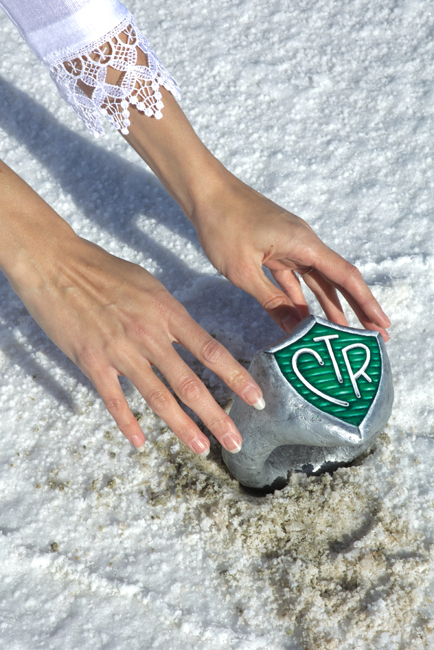
“One story that isn’t told very often is of female artists within Mormonism,” Morrison tells me. “They aren’t really encouraged to seriously follow that career path.”
This was, at least initially, her experience. For years, she worked in the corporate world as a campus recruiter while her husband completed his MBA. Eventually, she quit to become a full-time artist, which she describes as a liberating experience.
Although her work grapples with the iconography of the LDS church, it enables viewers from other faiths to draw connections to their own experiences.
“People love to hear about Mormonism specifically because they think it’s really different than regular Christianity or worse for some reason,” Morrison explains. “Yet, there are several systems that operate in ways that oppress women, so I can draw parallels to religious culture here in Texas.”
Before leaving the LDS church, Morrison experimented widely with a variety of media and subject matter, working in abstract and mixed-media collages before arriving at her hyper-realistic and fantastical aesthetic.

“I’ve always been enamored with the past and artifacts from the past, what came before me and influenced who I became,” she says. At the same time, her art began changing and became a vessel for processing her exit from faith.
One work stands out in this respect. Her self-portrait, Lot’s Wife (2023), takes its name from the biblical fable in which the wife of Lot, the immoral gentleman who offers up his daughters as sexual favors to two visiting angels in the sinful city of Sodom, gazes back at the city she has been urged to flee. In exchange for her hesitation, she is converted into a pillar of salt.
The painting shows Morrison’s head and neck turned away from the viewer’s gaze and facing outward toward the salt flats of Utah’s west desert. A thick, grimy salt accumulates on her left shoulder, leaving the skin beneath pink and inflamed, as if slowly overtaking and infecting her body.
Much of her work explores the veneer of perfection that religious faith engenders. The visual marks of religiosity and compliance, such as garments worn underneath one’s clothing, are evident in Against the Skin (in Bondage) (2022) and I Know Not, Save the Lord Commanded Me (2022), which depicts an outstretched hand donning several CTR rings. Elsewhere in her studio are fascinating sculptural works that mimic ornamental religious jewelry.
“Growing up, in every situation, people were going to be looking for the visual signs that I was a righteous girl,” says Morrison of her inspiration behind these works.
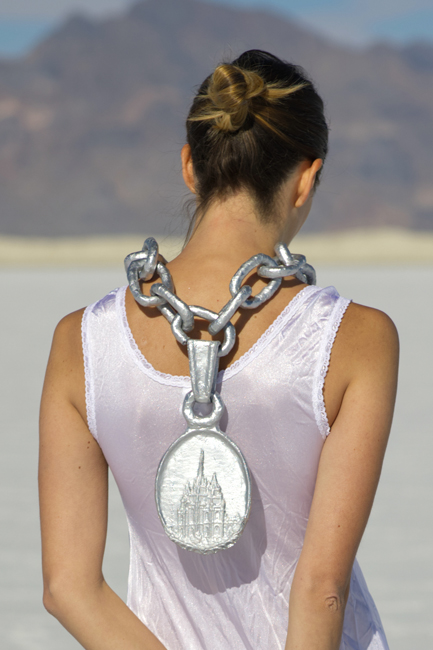
The painting Wanton Eyes (2022) is particularly stirring. It depicts the face of a young woman, her eyes obscured by two enormous silver medallions, each engraved with a depiction of the Salt Lake City temple. Mimicking the crown of thorns worn by Christ during his passion, a chain encircles the woman’s forehead and carries the heavy medallions. (Variations of the young womanhood recognition medallion are conferred upon those who complete a six-year program from ages twelve to seventeen.) The painting’s subject is the artist’s mother, inspired by the idea “of losing sight of the world around you.” To her, the painting is ripe with symbolism, for not only are the medallions blinding her mother’s sight but they are oppressively pressed into her skin. The temple imagery makes clear the singular devotion to the LDS faith at the expense of all else.
This sense of enormous self-sacrifice is one that Morrison recognized frequently in LDS culture, particularly for women and marginalized groups.
“As a woman, you are expected to be attractive in all ways, but on the inside, what you can’t see is a lack of control and a lot of pain,” she says. “As a young woman who had a lot of discouraged dreams and ambitions, this was heartbreaking.”
Morrison hopes that showcasing her autobiographical experience can help others feel less alone. While she avoids work that intentionally offends, she hopes it incites conversation and acts as an agitator for change.
“The unraveling [from faith] has fueled my hopes of representing myself, women, and queer people and to overcome what has made them feel ‘other’ and like they truly cannot be themselves.”
